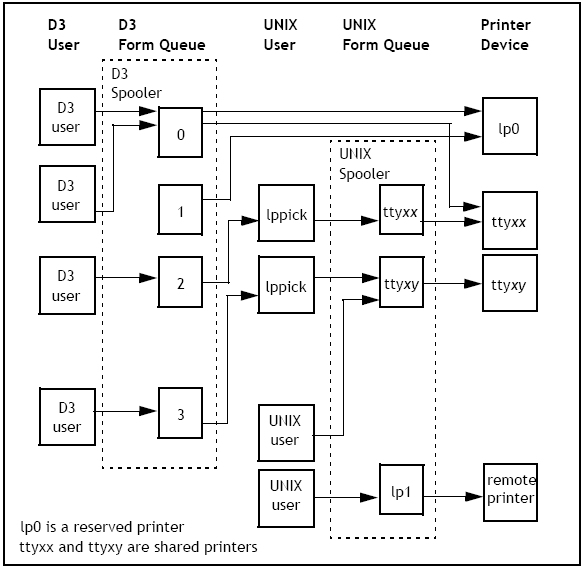Shared printers
A printer can be shared between UNIX and D3, so that both D3 and UNIX users can access it transparently. On a D3 virtual machine, both shared and reserved printers can coexist. This approach allows users to take advantage of D3 spooler features like alignment, hold files, and multiple copies, while still utilizing the UNIX spooler for final output. If such D3 spooler functionality is not required, it is possible to spool data directly to the UNIX spooler bypassing the D3 printer processor altogether.
The general principle of a shared printer consisting of a system with one reserved printer, two shared printers, and a remote printer is shown in the next figure.
Shared printers look the same as reserved printers to D3 users; they are managed by the D3 spooler which submits jobs to D3 printer processes serving specified form queues. Instead of sending the output directly to a device, as is the case for reserved printers, the shared printer process output is redirected to a filter which interfaces to UNIX and sends the job to the UNIX spooler. Another difference is that spooling out of the virtual machine is nearly instantaneous since the filter writes the print job to a UNIX print file. It is almost impossible to use sp-kill to cancel a job from D3; it must be performed using the UNIX cancel command.
The association between the D3 form queue and the printer follows these rules:
-
A form queue is associated to a printer process.
-
A D3 printer process is associated to a filter when the shared printer is started.
-
A filter is associated to one UNIX queue.
-
A UNIX queue is serviced by one or more printers.
This mechanism is controlled by the TCL startshp command.
